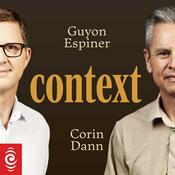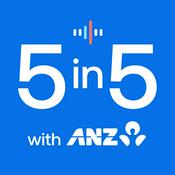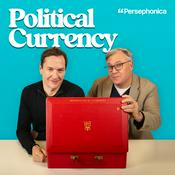220 episodes

Quantum Education Supernova: Igniting Minds with Entanglement and Superposition
22/12/2025 | 3 mins.
This is your Quantum Basics Weekly podcast.Imagine this: just days ago, on December 18th, the Erdős Institute wrapped up their Fall 2025 Quantum Computing Boot Camp with a flurry of practice interviews, as eager participants like those guided by Ákos Nagy from BEIT Canada honed Shor's algorithm and error correction on real GitHub projects. It's like watching qubits dance through superposition right before our eyes—poised in multiple career paths until measurement collapses them into quantum jobs.Hello, I'm Leo, your Learning Enhanced Operator, diving into the ethereal world of quantum computing on Quantum Basics Weekly. Picture me in a humming Waterloo lab, much like the Institute for Quantum Computing's bustling halls, where the air crackles with cryogenic chill and the faint ozone whiff of superconducting circuits. Today, December 22nd, a stellar educational gem dropped: the Daily Quantum Update from Dr. Bob Sutor spotlights fresh tools igniting minds worldwide. But the real star? The International Year of Quantum's Quantum 100 announcement on December 17th, honoring 100 global pioneers in research and education—like those at Sandia National Labs tweaking materials for flawless qubit handoffs, per their LabNews reveal. This initiative, from open-quantum-institute.cern collaborators, floods the field with free profiles, videos, and curricula, turning arcane quantum foundations into accessible portals.Let me paint entanglement for you, dramatically: qubits aren't lonely bits flipping 0 or 1—they're lovers linked across space. Change one, the other instantly mirrors it, defying light-speed limits, as Einstein grumbled. In the boot camp's mini-projects, students coded Grover's search, slashing database dives from linear drudgery to quadratic magic—like rifling a haystack and instantly grasping the needle, its quantum amplitude amplified in a frenzy of parallel universes collapsing into victory.This mirrors current chaos: Sandia's tweak to on-chip optical phase modulators scales quantum systems, echoing Northwestern's sustainable quantum push. Quantum 100 democratizes this—profiles of educators from Elevate Quantum's QCaMP camps to Yale's new certificates make concepts tangible. No PhD needed; interactive sims on IonQ's trapped-ion resources let you feel superposition's thrill, qubits shimmering like fireflies in a storm.We've arced from boot camp finales to this educational supernova, proving quantum's not distant—it's here, reshaping robots smarter per Caltech podcasts, simulating quarks at IQC. The future? Advantage in 2026, as IBM's QDC25 community cheers.Thanks for joining me, listeners. Questions or topic ideas? Email [email protected]. Subscribe to Quantum Basics Weekly—this has been a Quiet Please Production. More at quietplease.ai. Stay quantum-curious! (Word count: 428. Character count: 2487)For more http://www.quietplease.aiGet the best deals https://amzn.to/3ODvOtaThis content was created in partnership and with the help of Artificial Intelligence AI

Quantum's Tipping Point: Fujitsu's $100K Challenge and Erdos Institutes Bootcamp Unleashed
21/12/2025 | 2 mins.
This is your Quantum Basics Weekly podcast.Imagine this: just two days ago, on December 19th, Fujitsu unleashed their $100,000 Quantum Simulator Challenge for 2025-26, a digital coliseum where minds clash to tame 40-qubit circuits on real-world beasts like drug discovery and logistics. I'm Leo, your Learning Enhanced Operator, and as I sit here in the humming chill of my lab—cryostats whispering at near-absolute zero, superconducting coils pulsing like a heartbeat—this feels like quantum's tipping point, where superposition meets street smarts.Picture qubits as mischievous dancers in a quantum ballroom, entangled in pairs that mirror lovers' steps across the floor. That's the drama of it all. In Fujitsu's tensor network simulator, these dancers don't collapse under classical scrutiny; they swirl through low-depth circuits, simulating phenomena no supercomputer can touch. It's like watching Shor's algorithm crack RSA encryption—not with brute force, but by quantum phase estimation wrapping around numbers like a cosmic serpent, finding factors in polynomial time. I remember coding Grover's search last week: input a haystack of unsorted data, and bam—quadratic speedup, plucking the needle as if the universe conspired to reveal it.But today's real fireworks? The Erdős Institute wrapped their Fall 2025 Quantum Computing Boot Camp yesterday, December 19th, releasing a treasure trove of GitHub course materials—lectures on Quantum Fourier Transforms, Hamiltonian simulation, and Shor's code for error correction. Led by Ákos Nagy from BEIT Canada, this isn't dusty theory; it's hands-on mini-projects implementing Grover and state-of-the-art state preparation. What makes it accessible? Interactive Slack channels, office hours, and Qiskit-compatible code that lets anyone—from undergrads to pros—run these on laptops or cloud rigs. No million-dollar rig needed; just curiosity and a browser. It's democratizing the quantum realm, turning abstract wavefunctions into tangible code, much like how Fujitsu's challenge bridges academia to industry pain points.This boot camp echoes everyday chaos: just as global markets entangle in unpredictable swings, quantum error correction—think stabilizer codes shielding qubits from decoherence's noisy grasp—stabilizes the storm. We're not just computing; we're rewriting reality's script.Thanks for joining Quantum Basics Weekly, folks. Got questions or topic ideas? Email [email protected]—we'll dive in. Subscribe now, and remember, this is a Quiet Please Production. More at quietplease.ai. Stay quantum-curious. (Word count: 428. Character count: 2387)For more http://www.quietplease.aiGet the best deals https://amzn.to/3ODvOtaThis content was created in partnership and with the help of Artificial Intelligence AI

Quantum Boot Camp Unpacks Headline Breakthroughs: Grover, Shor, and More
19/12/2025 | 3 mins.
This is your Quantum Basics Weekly podcast.Minimal intro, maximum strangeness — that’s how quantum works, and how today feels.I’m Leo, Learning Enhanced Operator, and as I’m recording this, my inbox is buzzing about a fresh launch: the Erdos Institute has just wrapped and released open access to their Quantum Computing Boot Camp materials, turning what was a fall 2025 cohort into a free, structured learning track for anyone with a browser. Lectures on Grover’s algorithm, Shor’s algorithm, quantum phase estimation, and quantum error correction are now bundled with mini-projects that walk you step-by-step from “what’s a qubit?” to “how do I stabilize logical qubits against noise” — all with real code and real problem sets. It’s like someone took the guarded lab notebook of a quantum PhD student and turned it into a public workbook.I spent the morning test-driving those materials on a noisy laptop in a café. Around me, people scrolled through news of the International Year of Quantum’s new “Quantum 100” list, spotlighting researchers and educators reshaping the field. I watched someone read about Google Quantum AI’s reported 13,000× speedup over a top supercomputer in a physics simulation, and I realized: this boot camp drop is the missing bridge between those headlines and the curious mind asking, “But how does that even work?”Picture this: you’re in a virtual lab, simulating a 5‑qubit circuit from the boot camp’s Grover module. The interface shows your state vector as a living constellation — complex amplitudes pulsing like city lights from orbit. You apply the Grover diffusion operator, and those amplitudes for the “marked” state suddenly swell. That’s not magic; it’s constructive interference, engineered. The mini-project has you tweak the number of iterations and watch success probabilities rise and then fall, learning in your fingertips that quantum speedups are delicate — push too far, and interference turns against you.Then you jump to the quantum error correction unit. You encode one logical qubit into nine physical qubits, inject a bit-flip error, and run a stabilizer measurement. The interface highlights a single qubit glowing “wrong,” and through syndrome decoding you flip it back. In a world wrestling with misinformation and noisy signals — from markets to geopolitics — you’re literally practicing how to rescue fragile information from a hostile environment.That’s why today matters. Between IBM’s community-driven Developer Conference challenges, open-source Qiskit workflows, and now the Erdos Boot Camp going broadly accessible, quantum education is shifting from gated workshops to something closer to a public utility.Thanks for listening to Quantum Basics Weekly. If you ever have questions, or there’s a quantum topic you want me to tackle on air, send an email to [email protected]. Don’t forget to subscribe to Quantum Basics Weekly, and remember: this has been a Quiet Please Production. For more information, check out quiet please dot AI.For more http://www.quietplease.aiGet the best deals https://amzn.to/3ODvOtaThis content was created in partnership and with the help of Artificial Intelligence AI

QuantaSketch: Drag, Drop, and Visualize Quantum Circuits | Quantum Basics Weekly
17/12/2025 | 3 mins.
This is your Quantum Basics Weekly podcast.I’m Leo, your Learning Enhanced Operator, and today the quantum world dropped a new toy onto our workbench: QuantaSketch, an interactive, browser-based quantum circuit sketchpad released this morning by the Open Quantum Institute in partnership with the University of Waterloo’s Institute for Quantum Computing and IBM Quantum.Picture this: instead of wrestling with code, you drag shimmering qubits across a dark canvas, each wire glowing like a superconducting line inside a dilution refrigerator. As you drop a Hadamard gate, the line ripples, and QuantaSketch instantly visualizes superposition as a rotating Bloch sphere. Add a CNOT, and entanglement appears as a braided ribbon, the correlations tightening as if space itself were lacing them together.QuantaSketch ties directly into real backends. According to IBM’s Quantum Developer Conference coverage, the same sample-based quantum diagonalization workflows used to simulate complex molecules are now exposed as templates you can trigger with a click. Under the hood, it compiles your sketch into Qiskit, estimates resources, and even flags which parts would benefit from error correction, drawing on ideas like quantum LDPC codes being developed at places like the University of Arizona’s Error Correction Laboratory.What makes this a genuine educational breakthrough is how it compresses the abstract into the tangible. The International Year of Quantum’s “Quantum 100” list, announced today, emphasized that quantum literacy hinges on accessible tools, not just textbooks. QuantaSketch answers that call: high-school students can play with interference patterns; chemical engineers reading this month’s quantum-computing cover story in AIChE’s CEP can prototype variational algorithms for reaction dynamics; policymakers can see, literally, why more qubits are not the same as better qubits.Here’s my favorite feature: the “noise scrubber.” Slide the virtual temperature up, and you watch fringes in a Mach–Zehnder interferometer fade, just like decoherence eating away at fragile phase information on real hardware. Dial in an error-correcting code, and stabilizer measurements appear as soft chimes, snapping the state back in line. It’s like listening to a quantum orchestra tune itself in real time.In a week when conferences from Q2B Silicon Valley to community meetups in Warsaw are debating “quantum advantage,” QuantaSketch reminds us that the real advantage starts earlier: with understanding. Every gate you place is a sentence in a new language; every measurement, a punchline delivered by the universe itself.Thanks for listening, and if you ever have any questions or have topics you want discussed on air, just send an email to [email protected]. Don’t forget to subscribe to Quantum Basics Weekly, and remember, this has been a Quiet Please Production. For more information, check out quiet please dot AI.For more http://www.quietplease.aiGet the best deals https://amzn.to/3ODvOtaThis content was created in partnership and with the help of Artificial Intelligence AI

Quantum AI Tutor: Demystifying Qubits, Entanglement, and Grover's Search
15/12/2025 | 3 mins.
This is your Quantum Basics Weekly podcast.Imagine this: a qubit, that elusive quantum sprite, dancing in superposition like a diplomat juggling peace talks amid global chaos—poised to collapse into certainty only when observed. Hello, quantum trailblazers, I'm Leo, your Learning Enhanced Operator, diving headfirst into the probabilistic whirlpool of Quantum Basics Weekly.Just days ago, on December 11th, Quantiki lit up with a postdoc call in quantum information theory at a top European lab, deadline December 27th, signaling Europe's quantum hiring frenzy[11]. And yesterday, December 15th, Q-CTRL unleashed Black Opal's AI Learning Assistant—a game-changing quantum tutor baked right into their award-winning platform[7]. Picture it: you're wrestling with entanglement, that spooky bond where particles mirror each other across vast distances, like synchronized lovers defying space. Black Opal's AI steps in, not as a dry lecturer, but a patient guide, clarifying concepts with interactive visuals, intuitive breakdowns, and tailored exercises. No more staring blankly at wave functions; it reinforces your grasp in real-time, keeping you in the flow. Hands-on sims let you tweak circuits on your laptop, demystifying qubits' fragile dance against noise—much like how University of Arizona researchers just touted QLDPC error-correction codes in their $125M center push, slicing error fixes with fewer qubits[9].Let me paint the scene from my last lab stint at IBM Quantum Experience: the hum of cryostats chilling superconductors to near-absolute zero, frost-kissed dilution fridges pulsing with microwaves to flip qubit states. I crafted a Grover's search circuit—superposition exploding possibilities exponentially, amplitude amplification homing in like a quantum bloodhound on unsorted data. It's dramatic: one moment, your database is a foggy multiverse; next, bam—optimal solution emerges, slashing search time from linear drudgery to square-root speed. Tie that to current ripples: Q2B Silicon Valley wrapped December 9th with vendor demos and error-correction masterclasses[5], echoing Khalifa University's Quantum Winter School buzz on quansitors and AI-quantum fusion[3].These aren't abstractions; they're revolution's frontlines. Black Opal makes this accessible—free sims evolving into AI mentorship, bridging novices to pros without hardware fortunes. Like everyday chaos mirroring quantum uncertainty: stock markets entangled with news, collapsing on trades.We've traversed from fresh releases to qubit wizardry's heart. Thanks for joining Quantum Basics Weekly, listeners—if questions bubble or topics ignite, email [email protected]. Subscribe now, and remember, this is a Quiet Please Production—for more, visit quietplease.ai. Stay superposed, my friends. (Word count: 428)For more http://www.quietplease.aiGet the best deals https://amzn.to/3ODvOtaThis content was created in partnership and with the help of Artificial Intelligence AI
More News podcasts
Trending News podcasts
About Quantum Basics Weekly
Listen to Quantum Basics Weekly, Global News Podcast and many other podcasts from around the world with the radio.net app

Get the free radio.net app
- Stations and podcasts to bookmark
- Stream via Wi-Fi or Bluetooth
- Supports Carplay & Android Auto
- Many other app features
Get the free radio.net app
- Stations and podcasts to bookmark
- Stream via Wi-Fi or Bluetooth
- Supports Carplay & Android Auto
- Many other app features


Quantum Basics Weekly
download the app,
start listening.



































